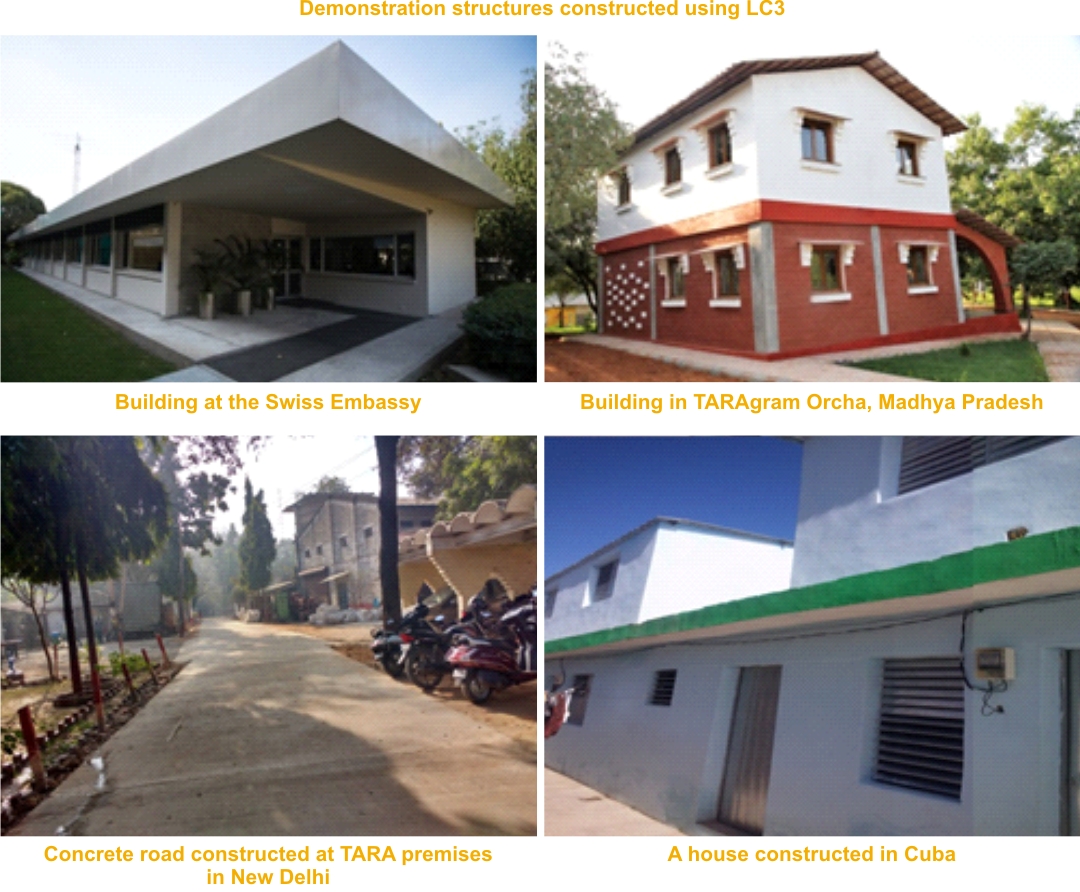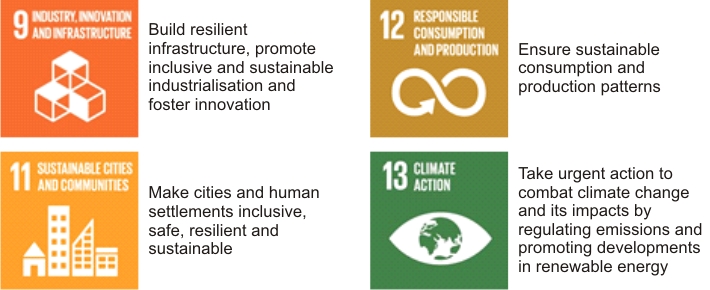Limestone Calcined Clay
Cement (LC3) –
Contributions to Sustainable Development Goals
The landmark Paris Agreement - Conference of Parties (COP) 21 inked the consensus of the world in combating climate change. The agreement aims to strengthen the global response in curbing this century’s global temperature rise below 2 degrees Celsius above pre-industrial levels. The means to achieving this target are the ‘Nationally Determined Contributions’ (NDCs), a measure of greenhouse gases mitigation targets for each country which has ratified the Paris agreement. Till date about 162 parties of the total 192 that represented in COP21 have submitted their NDCs to the United Nations Framework Convention on Climate Change (UNFCC). To bring in accountability, it is required for each party to regularly report GHG emissions and its mitigation implementation efforts to UNFCC. Thus, it has become binding for each country to take measures in achieving the NDCs (UNFCC, 2014).
The end of the industrial revolution somewhere in the 1840s is also seen as a time when global warming accelerated (Huffpost, 2016). The industrial revolution brought a shift from manual production methods to machines. In the same period, cement - a revolutionary material was patented which today is the largest construction material produced in the world. The production processes of cement utilise coal as the main fossil fuel for burning limestone at high temperatures. Coal is one of top emitters of CO2 as it is utilised in heat and power generation by various sectors including cement. The sheer quantity of cement production puts it amongst the top contributors of man-made CO2 emissions after power generation and transport. As per the WBCSD (World Business Council for Sustainable Development), the total volume of world cement production in 2014 was 848 million tonnes.

The major contributor of CO2 emissions in cement production is the process of production of clinker, one of the main constituents of cement. Clinker is produced by burning cement grade limestone at 1400 degree Celsius. In 2015 cement production alone contributed to about 8% of the global CO2 emissions, 4% of which came from clinker production (Olivier, Janssens-Maenhout , Muntean, & Peters, 2016). Cement production also consumes natural resources such as limestone. The conventional cement is constituted of 95% limestone.
Therefore, implementing policy and technological changes for sustainable cement production will significantly influence mitigating CO2 emissions and achieving NDC targets of countries which signed the Paris Agreement. The most cost efficient technological shift to reduce energy consumption, CO2 emission and resource consumption from cement production is to reduce the clinker content in cement (WBCSD, 2015). The cement industry around the world has recognised this and shifted to blended cement by replacing clinker with industrial wastes such as fly ash and slag. However, the availability of these industrial wastes is very specific to regions and factors such as quantity of coal utilisation by thermal power plants. As per a Cement Sustainability Initiative (CSI) report, use of fly ash and slag in worldwide cement production has not increased from 2007 while limestone use is constantly increasing.
To address the twin issues of CO2
emissions and saving natural resources, a new cement blend has been
developed by a consortium of EPFL, IIT-Delhi, IIT-Madras, IIT-Bombay, TARA
and CIDem through a project funded by Swiss Agency for Development and
Corporation (SDC). The cement blend uses 50% clinker, 15% non-cement grade
(waste) limestone, 30% waste china clay from mines and 5% gypsum. The blend
has two major advantages for sustainable cement production:
• About 45% of the raw material used in the blend is waste,
• Clinker content is reduced to 50%.
Waste china clay is calcined at 800-900˚C and ground with clinker, gypsum and waste limestone. The produced cement is named as Limestone Calcined Clay Cement (LC3). Life Cycle Analysis of LC3 reveals that LC3 production can reduce CO2 emissions up to 30% and save up to 50% limestone as compared to conventional cement. The cement is found to have comparable durability and strength when compared to conventional cement. The LC3 cement has also been produced in commercial cement plants without any major modifications in the existing processes which shows the ease of production at a commercial scale with little or no additional investment. Suitability of the cement for buildings and infrastructure has been tested by constructing various demonstration buildings and roads in India and Cuba. There are enormous volumes of china clay available throughout the world and its availability is dependent only on the region. Interestingly, the most suitable clay for production of LC3 is waste clay from china clay mines.
Limestone Calcined Clay Cement (LC3) also contributes towards achieving the Sustainable Development Goals (SDG). Above is a list of the SDG s that are supported by LC3. ■
References
• Huffpost. (2016, August 25). Global Warming Actually Began In The 1830s, And That's Very Troubling. Austrailia. Retrieved from http://www.huffingtonpost.com.au/2016/08/24/global-warming-actually-began-in-the-1830s-and-thats-very-trou/
• Olivier, J. G., Janssens-Maenhout , G., Muntean, M., and Peters, J. A.H.W (2016). Trends in global CO2 emissions; 2016 Report. The Hague: PBL Netherlands Environmental Assessment Agency, Ispra: European Commission, Joint Research Centre.
• UNFCC. (2014). The Paris Agreement. Retrieved from United Nations Framework Convention on Climate Change: http://unfccc.int/ paris_agreement/items/9485.php
• WBCSD. (2015). Low Carbon Technology Partnerships Initiative-Cement. New York: World Business Council for Sustainable Development.
Vaibhav Rathi
vrathi@devalt.org